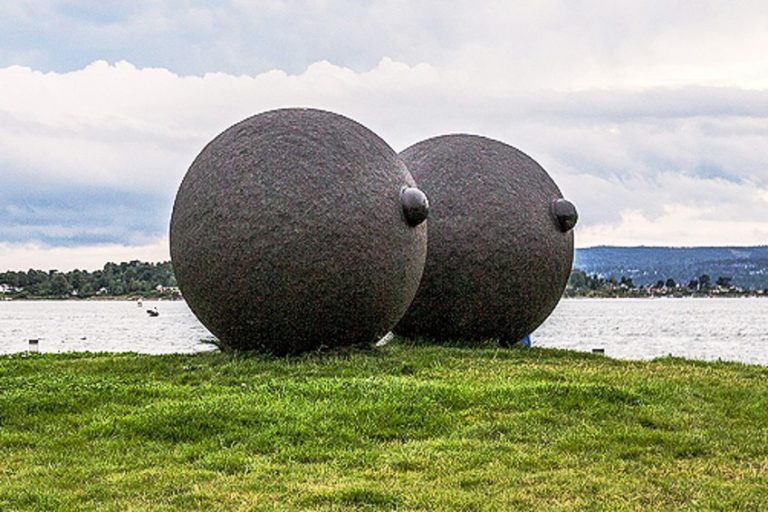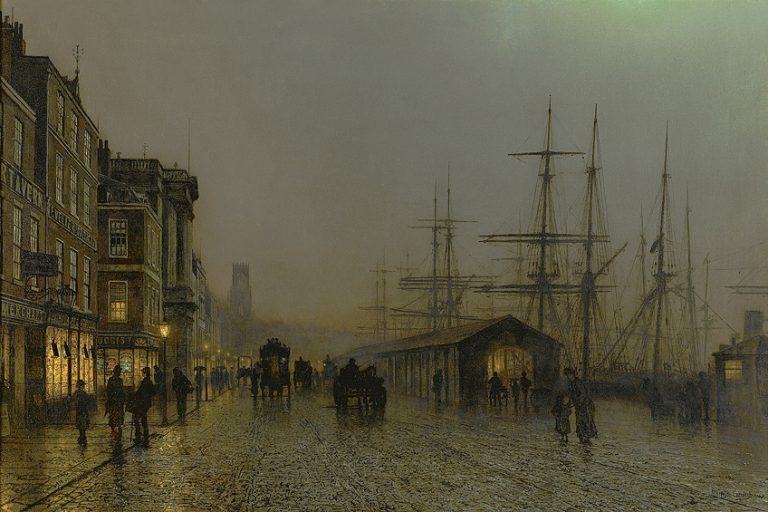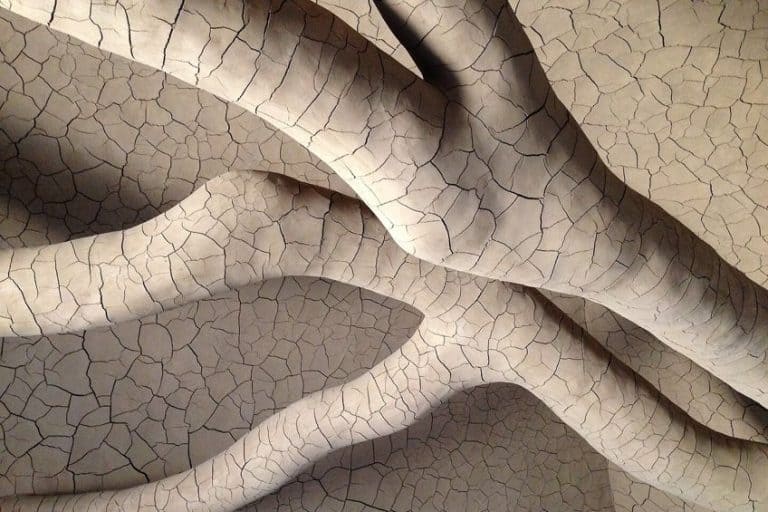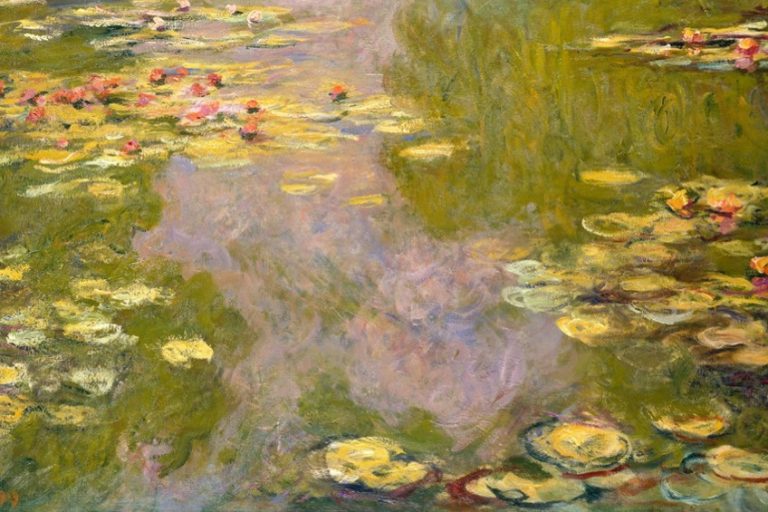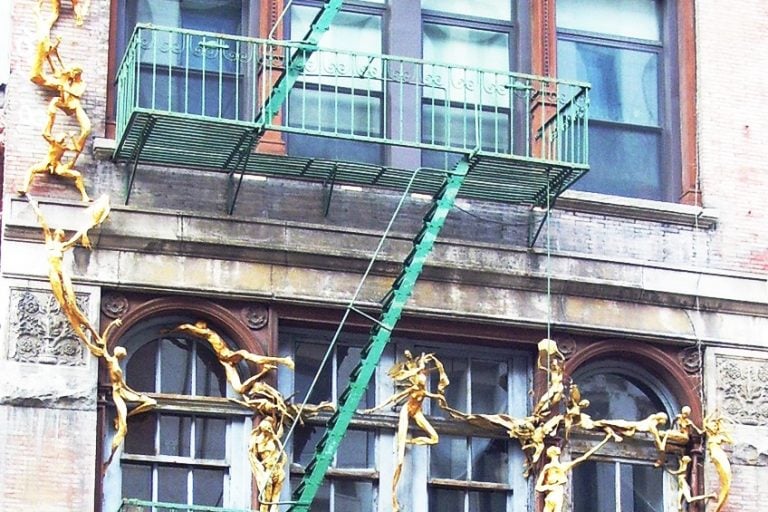Angelica Kauffman – A Woman Ahead of Her Time
Angelica Kauffman, an influential figure in 18th-century art, was a Swiss Neoclassical painter renowned for her portraits, historical scenes, and mythological subjects. Born in 1741, Kauffman gained recognition for her exceptional talent and became one of the few female artists of her time to achieve international acclaim. Her works, characterized by their elegance, emotional depth, and classical influences, reflect her mastery of composition and skillful use of color. Kauffman’s artistic contributions continue to inspire and captivate art enthusiasts worldwide, solidifying her legacy as a pioneering woman artist of the Neoclassical era.
Table of Contents
Key Takeaways
- Angelica Kauffman was a pioneering female painter during the Neoclassical period.
- She co-founded the Royal Academy of Arts and was acclaimed for her history and portrait paintings.
- Kauffman’s legacy endures as a testament to her artistic skill and barriers she overcame.
Early Life and Education
| Birth | October 30, 1741 |
| Death | November 5, 1807 |
| Place of Birth | Chur, League of God’s House (Present-day Graubünden, Switzerland) |
| Genre of Work | Neoclassicism movement |
Angelica Kauffman was a Swiss Neoclassical artist who carved a distinguished place for herself in the male-dominated art world of the 18th century. Born on October 30, 1741, in Switzerland, her upbringing in a family connected to art and nobility afforded her an uncommon education and exposure to the arts from a young age. Her father, Johann Josef Kauffman, was a painter who recognized and nurtured her talent early on, setting the stage for her future success.
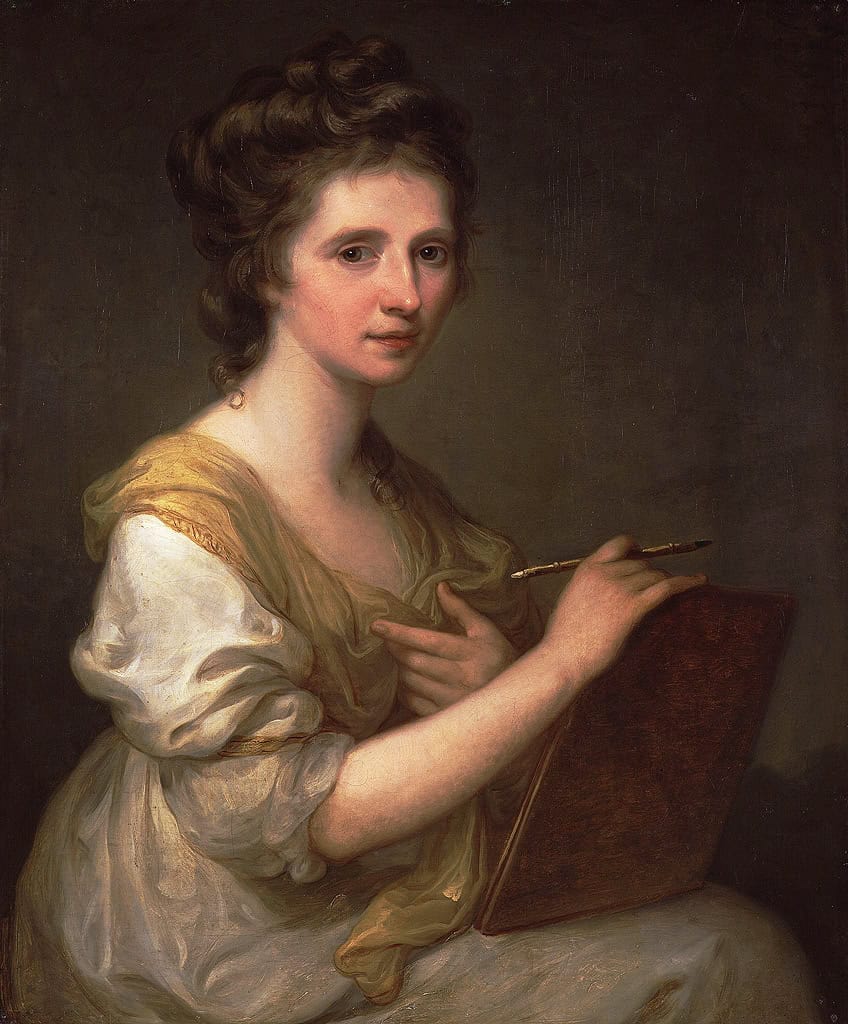
She developed a multifaceted career across Europe, gaining considerable acclaim in London and Rome for her poignant history paintings, expressive portraits, and ornate decoration work. As a co-founder of the Royal Academy of Arts in London, she broke gender barriers, becoming one of the most influential female artists of her time.
Kauffman’s versatility was also evident in her ability to fluently navigate different artistic roles, serving not only as an exceptional painter but also as a shrewd businesswoman in the art community of her era.
Artistic Prodigy in Chur
Born in Chur, Switzerland, Angelica Kauffman was recognized as a child prodigy. Her father, Joseph Johann Kauffman, was a painter who provided her with a comprehensive foundation in the arts. Under his tutelage, she rapidly developed her artistic skills and began mastering languages, which later facilitated her European career.

Studies in Italy
Kauffman’s education was augmented significantly by her studies in Italy. Immersed in the epicenter of classical art and the Renaissance heritage, she honed her painting techniques and cultivated an understanding of the Neoclassical style, which would permeate her work.
Mature Career
Upon establishing her mature career, Kauffman’s reputation flourished, particularly in London, where she became a central figure in the British art establishment. Her linguistic proficiency and her cultured background facilitated her involvement in influential artistic and literary circles.

Late Career
In her late career, Kauffman returned to Rome, where she continued to produce artwork that resonated with the Neoclassical style. Despite the challenges faced by women artists of the era, her legacy endured through her contributions to history painting and portraiture.
Career and Achievements
Angelica Kauffman achieved considerable success in her career as a neoclassical painter, becoming notable for her roles within prominent art circles in London and Rome. She was a pioneer among women artists and made significant contributions as a founding member of the Royal Academy.

Rise in London Artistic Circles
Kauffman moved to London in 1766, where she rapidly gained repute. Her proficiency in history painting and portraits garnered the attention of influential figures, such as Joshua Reynolds, the first president of the Royal Academy. Kauffman’s association with Reynolds and other notable English artists boosted her stature within the artistic community.
Her works were frequently exhibited at the Society of Artists and later at the Royal Academy’s inaugural exhibition at Somerset House.
Royal Academy Founding Member
In 1768, Kauffman, alongside Mary Moser, became one of the only two female Founding Members of the Royal Academy. She was involved in the Academy from its inception and participated in their exhibitions, presenting both portraits and history paintings. Her status as a founding member alongside esteemed male contemporaries highlighted the exceptional recognition of her work at a time when women’s participation in the arts was limited.

Expansion to Continental Europe
After her substantial impact on the London art scene, Kauffman’s career extended back to the continent. Her relocation to Rome solidified her reputation as an accomplished portraitist and history painter. In Rome, her work continued to develop and flourish.
Kauffman remained a vital connector between the British and European art worlds, facilitating cultural exchange and reinforcing her legacy as an influential neoclassical painter.
Important Artworks by Angelica Kauffman
Angelica Kauffman was a Swiss Neoclassical painter whose legacy includes a diverse range of paintings that span from history to portraiture. This section highlights a few of her significant contributions to art.
- The Family of the Earl of Gower (1772): As a skilled portraitist, Kauffman painted this group portrait, exemplifying her ability to capture the essence and relationships of her subjects.
- Zeuxis Selecting Models for his Painting of Helen of Troy (1778): This history painting reflects Kauffman’s classical education and showcases her storytelling ability through visual arts.
- Cornelia Pointing to her Children as her Treasures (1785): Kauffman’s mastery in history painting is evident in this work where she illustrates a powerful narrative from classical antiquity around the theme of motherhood and virtues.
- Self-Portrait Hesitating between the Arts of Music and Painting (1791): In this introspective piece, Kauffman portrays herself torn between music and painting, symbolizing her personal connection with both arts.

Her works were not only visually striking but also embedded with intellectual and moral narratives, which positioned her at the heart of the British art establishment of her time. Kauffman’s important artworks continue to be celebrated for their contribution to neoclassicism and their representation of female empowerment in an era when women had limited access to artistic training and opportunities.
Artistic Style and Influence
Angelica Kauffman’s artistry was marked by a graceful alignment with Neoclassicism and an adept expression of personality through portraiture. Her works stand out for their historical narrative and intimate self-representation.
Neoclassicism and Historical Themes
Kauffman embraced the Neoclassical style, which sought to emulate the arts of ancient Greece and Rome. She focused on historical paintings that often incorporated themes from mythology and featured prominent goddesses. Her compositions were well-balanced, echoing the harmony found in the works of Renaissance masters like Raphael.

Often her paintings would depict strong and virtuous women from history, connecting the richness of the past with the enlightened values of her present. Key aspects of Kauffman’s Neoclassical style include her harmonious composition, the influence of ancient arts, and the incorporation of mythological and historical themes.
Portraiture and Self-Expression
In portraiture, Kauffman had a unique flair for capturing the essence of her subjects, with a recurring theme of artists and literati who were shaping the cultural landscape of her time. She painted numerous portraits, including self-portraits, which allowed her to express not only her own identity but also the societal position of women in the arts.
Through her self-portraiture, she often presented herself as aligned with female personifications of the arts, subtly embedding her own persona within wider cultural and artistic traditions.
Elements of Kauffman’s portraiture included:
- Self-portraits: Articulate personal and professional identity
- Portraits of contemporaries: Highlight the intellectual and artistic elite
- Stylistic approach: Clear, composed, and deliberate designs reflecting individual character
Artistic Accomplishments of Angelica Kauffman
Angelica Kauffman was a prominent Swiss Neoclassical painter who achieved notable success both in London and Rome. Her contributions to art history are multifaceted, demonstrating expertise in history painting, portraiture, landscape, and decoration.
- History painting: Kauffman is recognized for her work in this genre, which often depicted scenes from classical antiquity and aligned with the Neoclassical movement’s values.
- Portraiture: Beyond history paintings, her skill as a portraitist allowed her to capture the essence of her subjects with both grace and precision.
- Landscapes and decoration: Her landscapes exhibit a serene and pastoral quality, while her decorative works, particularly wall paintings for residences, show her versatility as an artist.

In 1768, Kauffman became a founding member of the Royal Academy of Arts in London, an extraordinary achievement as she was one of only two female members at the inception of this prestigious institution. Her membership at the Academy solidified her position at the heart of the British art establishment. During her 15-year residence in England, she made a significant impact on the London art scene.
Kauffman’s talent was nurtured from a young age, having been trained by her father, Joseph Johann Kauffman, also an accomplished painter.
In 2020, a retrospective at the Museum Kunstpalast in Düsseldorf highlighted Kauffman’s work, underscoring the lasting impact of her artistic contributions and her distinguished place within art history. Her self-portrait, Self-portrait with Stylus, stands as a testament to her self-awareness as an artist and her command of the medium.

Legacy and Impact of Angelica Kauffman
Angelica Kauffman left an indelible mark on the art world. As a prominent Neoclassical painter, she was a trailblazer for women in the arts during the 18th century. Despite the era’s constraints, Kauffman achieved success in a professional realm dominated by male Old Masters. She stands out as a key figure who helped pave the way for future generations of female artists. Kauffman’s impact extended across Europe, thanks to her prolific work as a history painter, portraitist, and decorator. Among her many accomplishments, she was a founding member of the Royal Academy of Arts in London, a significant achievement highlighting her status and influence in the art community.
Her works displayed a distinct blend of emotion and intellect, capturing the essence of Neoclassical ideals.
Her key contributions to the art world included co-founding the Royal Academy of Arts, introducing roles for women in history painting, and her extensive European influence. Kauffman’s artistry did not diminish with time; she continued to inspire artists well after her death. Although not directly tied to the concept of invention in the scientific or technological sense, her creative approach to merging classical ideals with contemporary subjects was itself innovative.

Kauffman’s ability to evoke mourning and other emotional states through her art left a lasting legacy that resonates in the canon of Western art. Her influence persists, and her pieces are still exhibited, honoring her contribution to the Neoclassical movement and to the broader narrative of art history.
Angelica Kauffman’s legacy endures as a testament to her groundbreaking achievements as a female artist in the Neoclassical period. Her exquisite portraits, captivating historical scenes, and timeless mythological subjects not only showcase her technical prowess but also her ability to infuse art with emotion and meaning. Kauffman’s enduring influence on the art world serves as a reminder of the barriers she broke and the artistic heights she reached, inspiring generations of artists and admirers to appreciate and celebrate her remarkable contributions to the rich tapestry of art history.
Frequently Asked Questions
What Artistic Style Is Angelica Kauffman Best Known For?
She is best known for Neoclassicism, an art style that sought to emulate the simplicity and grandeur of ancient Greece and Rome. Her work often featured classical themes and strong lines that were typical of the movement.
What Were Angelica Kauffman’s Contributions to the Royal Academy?
Angelica Kauffman was a founding member of the Royal Academy of Arts in London. She was one of only two female founding members and helped to shape the Academy’s direction during its formative years through her contributions as a history and portrait painter.
How Did Angelica Kauffman Impact the Field of Neoclassical Painting?
Kauffman contributed to the revival of history painting, which became one of the dominant genres in the 18th century, reinforcing the principles of Neoclassicism. Her work often depicted historical and mythological subjects with an emotional depth that influenced other artists of the time.
Isabella studied at the University of Cape Town in South Africa and graduated with a Bachelor of Arts majoring in English Literature & Language and Psychology. Throughout her undergraduate years, she took Art History as an additional subject and absolutely loved it. Building on from her art history knowledge that began in high school, art has always been a particular area of fascination for her. From learning about artworks previously unknown to her, or sharpening her existing understanding of specific works, the ability to continue learning within this interesting sphere excites her greatly.
Her focal points of interest in art history encompass profiling specific artists and art movements, as it is these areas where she is able to really dig deep into the rich narrative of the art world. Additionally, she particularly enjoys exploring the different artistic styles of the 20th century, as well as the important impact that female artists have had on the development of art history.
Learn more about Isabella Meyer and the Art in Context Team.
Cite this Article
Isabella, Meyer, “Angelica Kauffman – A Woman Ahead of Her Time.” Art in Context. May 16, 2024. URL: https://artincontext.org/angelica-kauffman/
Meyer, I. (2024, 16 May). Angelica Kauffman – A Woman Ahead of Her Time. Art in Context. https://artincontext.org/angelica-kauffman/
Meyer, Isabella. “Angelica Kauffman – A Woman Ahead of Her Time.” Art in Context, May 16, 2024. https://artincontext.org/angelica-kauffman/.





